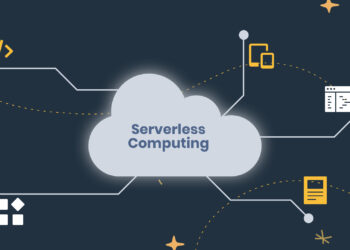In an era dominated by the allure of cloud computing, with its promises of infinite scalability and pay-as-you-go flexibility, the concept of “bare metal” might seem like a relic from a bygone era. Yet, paradoxically, bare metal servers are experiencing a powerful resurgence, not just as an alternative but as a crucial complement to virtualized environments. Bare metal refers to a physical server that is dedicated to a single tenant, meaning it’s not subject to the hypervisor layer that virtualizes resources for multiple users. This unmediated access to raw computing power, coupled with advancements in automation and provisioning, is proving indispensable for a growing number of specialized workloads.
From high-performance computing (HPC) and big data analytics to latency-sensitive applications and container orchestration, organizations are rediscovering the undeniable advantages of direct hardware access. This article will explore the driving forces behind the bare metal resurgence, detail its inherent benefits and ideal use cases, address the operational considerations, and project its evolving role in the hybrid cloud landscape. Understanding this shift is vital for businesses seeking optimal performance, control, and cost efficiency in their IT infrastructure.
Demystifying Bare Metal
To grasp the resurgence, it’s essential to define bare metal and differentiate it from its virtualized counterparts.
- Bare Metal Server:
- Definition: A physical server dedicated entirely to a single customer or tenant. The operating system (OS) is installed directly on the hardware, with no virtualization layer (hypervisor) between the OS and the underlying physical resources.
- Direct Hardware Access: Provides uncompromised access to CPU, RAM, storage, and network interfaces.
- Single-Tenant Environment: All hardware resources are exclusively for one user’s applications and data.
- Virtual Machine (VM):
- Definition: A software-based emulation of a computer system. Multiple VMs run on a single physical server, managed by a hypervisor.
- Resource Sharing: Hardware resources (CPU cycles, memory) are shared among multiple VMs, leading to potential “noisy neighbor” issues.
- Abstraction Layer: The hypervisor introduces a layer of abstraction between the guest OS and the physical hardware.
- Containers (e.g., Docker, Kubernetes):
- Definition: Lightweight, portable, and self-contained units that package an application and its dependencies, sharing the host OS kernel.
- Higher Density than VMs: More containers can run on a single physical server than VMs.
- Still Relies on a Host OS: While efficient, containers still run on top of an OS, which can be bare metal or a VM.
The Driving Forces Behind the Resurgence
The return to bare metal is not a step backward, but a strategic move driven by evolving technological needs and business priorities.
Performance Requirements
- Raw Processing Power: For compute-intensive workloads, the absence of a hypervisor overhead translates directly into higher raw performance and lower latency.
- Predictable Performance: Eliminates the “noisy neighbor” problem common in shared virtualized environments, ensuring consistent performance.
- Direct I/O Access: Crucial for applications demanding high input/output operations per second (IOPS) from storage and network.
Cost Optimization for Specific Workloads
- Long-Term Savings: While initial costs might seem higher than short-term cloud VM usage, for sustained, high-utilization workloads, bare metal can offer significant cost savings over time due to no virtualization overhead or hidden cloud costs.
- Licensing Efficiencies: Certain software licenses are optimized or cheaper for bare metal deployments.
- Avoiding Ingress/Egress Fees: Eliminates or significantly reduces data transfer costs often associated with public cloud services.
Security and Compliance
- Enhanced Isolation: Physical separation from other tenants provides a higher degree of security and reduces the attack surface.
- Meeting Strict Regulations: Certain industry regulations (e.g., in finance, healthcare, government) mandate single-tenant environments for data isolation and compliance.
- Root-Level Control: Full control over the hardware, firmware, and entire software stack allows for highly customized security configurations.
Emergence of Specialized Workloads
- High-Performance Computing (HPC): Scientific simulations, complex calculations, and rendering farms demand maximum performance with minimal latency.
- Big Data Analytics: Processing massive datasets with technologies like Hadoop, Spark, or specialized databases benefits from direct access to compute and storage.
- Artificial Intelligence (AI) / Machine Learning (ML): Training large AI models, especially those requiring powerful GPUs, thrives on the raw performance of bare metal.
- Container Orchestration: While containers can run on VMs, running Kubernetes clusters directly on bare metal provides higher density, better performance, and reduced overhead for large-scale deployments.
- Databases: High-transaction relational databases or NoSQL databases often perform best on bare metal due to their I/O intensive nature.
Advancements in Automation and Provisioning
- Bare Metal as a Service (BMaaS): Cloud providers and specialized vendors now offer bare metal servers that can be provisioned rapidly (minutes to hours) via APIs, bridging the gap with cloud VM flexibility.
- Infrastructure as Code (IaC): Tools like Terraform, Ansible, and Puppet can automate the deployment and configuration of bare metal servers, streamlining operations.
- Software-Defined Networking (SDN): Allows for flexible and automated network configurations, even on physical infrastructure.
Hybrid Cloud Strategies
- Bridging On-Prem and Public Cloud: Bare metal forms a critical bridge for organizations seeking to combine the control and performance of on-premises infrastructure with the agility of the public cloud.
- Workload Placement Optimization: Businesses can strategically place different workloads on the most suitable infrastructure – bare metal for performance-critical applications, VMs for general purpose, and serverless for event-driven tasks.
Ideal Use Cases for Bare Metal Servers

Not every workload benefits equally from bare metal. Its strengths align with specific demands.
- High-Performance Computing (HPC):
- Scientific Simulations: Weather modeling, drug discovery, physics simulations.
- Financial Modeling: Complex derivatives pricing, algorithmic trading.
- Engineering Design: CAD/CAM, finite element analysis (FEA).
- Big Data Analytics:
- Hadoop Clusters: Distributed processing of large datasets.
- Spark Workloads: In-memory data processing for real-time analytics.
- Data Warehouses: Extremely large data repositories requiring high query performance.
- Artificial Intelligence (AI) and Machine Learning (ML):
- Deep Learning Model Training: Leveraging powerful GPUs (Graphics Processing Units) for intensive computations.
- AI Inferencing: Deploying trained AI models for real-time predictions or decisions.
- High-Traffic, Low-Latency Web Applications:
- Gaming Servers: Requiring minimal lag for optimal user experience.
- Ad Tech: Real-time bidding platforms where milliseconds matter.
- Financial Trading Platforms: High-frequency trading.
- Relational and NoSQL Databases:
- Enterprise Databases: Oracle, SQL Server, MySQL, PostgreSQL for mission-critical applications.
- NoSQL Databases: MongoDB, Cassandra for scalable, high-throughput data storage.
- Container Orchestration (Kubernetes):
- Large Kubernetes Clusters: Running containerized applications directly on bare metal provides maximum efficiency and lower overhead compared to running Kubernetes on VMs.
- Edge Computing:
- Local Processing: Deploying bare metal servers at the edge (closer to data sources) for real-time processing and reduced latency, especially in IoT or industrial automation.
- Specific Compliance and Security Needs:
- PCI DSS Compliance: For payment card industry data.
- HIPAA Compliance: For protected health information.
- Government Workloads: Requiring strict data isolation.
- Virtual Desktop Infrastructure (VDI) Hosting:
- For large-scale VDI deployments where consistent user experience is critical and avoiding hypervisor overhead is beneficial.
Operational Considerations and Challenges
While offering significant benefits, bare metal deployments come with their own set of operational considerations that differ from virtualized environments.
- Provisioning Speed (Historically):
- Traditional Challenge: Historically, provisioning bare metal could take days or weeks.
- Modern Solution: BMaaS offerings have significantly reduced this to minutes or hours via APIs, making it much more agile.
- Management Complexity:
- Direct OS Management: Users are responsible for managing the entire operating system, patches, and drivers, which is abstracted away in IaaS VMs.
- Hardware Maintenance: While typically handled by the provider in BMaaS, on-premises bare metal requires internal expertise for hardware maintenance and upgrades.
- Solution: Automation tools (IaC), specialized bare metal management platforms, and robust monitoring systems are essential.
- Scalability (Historically):
- Traditional Challenge: Scaling bare metal involved purchasing and installing new physical servers, a slow process.
- Modern Solution: BMaaS providers offer elastic bare metal, allowing users to scale up or down based on demand, though still not as instantaneously as VMs.
- Capital Expenditure (for on-premises):
- High Upfront Costs: Purchasing and setting up physical servers, networking, and data center space requires significant capital investment.
- Solution: BMaaS converts CapEx to OpEx, similar to cloud VMs, making it more financially flexible.
- Data Center Operations:
- Power and Cooling: Managing the physical infrastructure’s power, cooling, and space requirements.
- Physical Security: Securing the physical server hardware.
- Solution: Utilizing colocation facilities or BMaaS providers offloads these responsibilities.
- Network Configuration:
- Complex Networking: Configuring physical network interfaces, VLANs, and load balancers can be more complex than virtualized networking.
- Solution: Software-defined networking (SDN) and automated network provisioning tools simplify this.
- Disaster Recovery (DR) and High Availability (HA):
- Manual Processes: Traditionally, DR for bare metal was more manual and required careful planning.
- Modern Solutions: Automation, active-passive configurations, and robust backup strategies are key. BMaaS offerings often include DR features.
Bare Metal in the Hybrid and Multi-Cloud Era
Bare metal is not a competitor to cloud computing but an increasingly integral part of a sophisticated hybrid and multi-cloud strategy.
- Strategic Workload Placement: Organizations are intelligently distributing workloads across bare metal (on-premises or as a service), public cloud VMs, and container platforms based on specific performance, cost, security, and compliance needs.
- Data Locality: Keeping sensitive or large datasets on bare metal (or colocation) to minimize data transfer costs and comply with data residency regulations, while using cloud for bursting or less sensitive workloads.
- Consistency Across Environments: Leveraging containerization and orchestration tools like Kubernetes allows for consistent application deployment and management across bare metal, VMs, and public clouds.
- Building Private Clouds: Bare metal provides the ideal foundation for building robust, high-performance private cloud environments using open-source software like OpenStack or commercial cloud stacks.
- Edge to Cloud Continuum: Bare metal servers are proving crucial for processing data at the edge, acting as local compute hubs that can then send aggregated or refined data to central cloud platforms for further analysis.
- Disaster Recovery Strategy: Bare metal can serve as a highly performant and secure DR target for critical applications running in the cloud or on-premises.
- Leveraging Cloud Features with Bare Metal Foundation: Public cloud providers offering bare metal instances allow organizations to benefit from cloud-native services (e.g., managed databases, AI/ML services) while retaining direct hardware access for core workloads.
The Future of Bare Metal
![]()
The trajectory of bare metal is one of continued evolution, integration, and specialization.
- Increased Automation and “Cloudification”: Bare metal provisioning will become even more seamless, programmatic, and integrated into cloud-native workflows, further blurring the lines between physical and virtual infrastructure.
- Enhanced Interoperability: Greater standardization and improved tooling will enable easier movement of workloads between bare metal, VMs, and containers, within and across different cloud environments.
- Specialized Hardware for Emerging Workloads: Continued development of purpose-built bare metal servers optimized for AI, quantum computing, or specific data analytics tasks, featuring advanced CPUs, GPUs, FPGAs, and custom silicon.
- Serverless on Bare Metal: While seemingly contradictory, some argue that highly optimized serverless runtimes could ultimately reside on bare metal for extreme performance and efficiency, abstracting the underlying hardware entirely from the user.
- Green Computing: As energy efficiency becomes paramount, bare metal’s ability to maximize resource utilization and avoid virtualization overhead will make it an attractive option for sustainable data centers.
- Edge Compute Dominance: Bare metal will play a central role in the burgeoning edge computing market, providing the robust, low-latency compute power required for localized processing in smart cities, industrial IoT, and autonomous systems.
- New Consumption Models: Expect more flexible “as-a-service” models beyond just hourly or monthly billing, potentially offering reserved capacity or performance-based pricing for bare metal.
Conclusion
The narrative of IT infrastructure is often depicted as a linear progression from on-premises to virtualized to cloud-native. However, the powerful resurgence of bare metal servers demonstrates that the landscape is far more nuanced and complex. Rather than being replaced, bare metal is carving out an indispensable niche for workloads demanding uncompromising performance, predictable latency, stringent security, and cost efficiency at scale. It is the unyielding foundation upon which the most demanding applications, the largest data lakes, and the most intensive AI models are built.
As organizations increasingly adopt sophisticated hybrid and multi-cloud strategies, bare metal will continue to serve as a critical component, enabling businesses to precisely match their workloads with the optimal infrastructure. The future of computing is not about a single dominant architecture, but about intelligent, integrated solutions where bare metal stands tall, providing the raw, unadulterated power that underpins the digital age. Its resurgence is a testament to the enduring value of physical hardware, optimized and automated for the challenges of tomorrow.
















